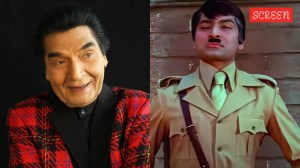They hope cash will bridge the caste divide here
For more than a fortnight now, nobody has dared set out to scavenge for dead cattle in the district; the Jhajjar lynching has sent a scare r...

For more than a fortnight now, nobody has dared set out to scavenge for dead cattle in the district; the Jhajjar lynching has sent a scare rippling among dalits—the community involved in the business of hiding of tanning—and even hough theirs is an entirely above-board occupation, they have been panicked into suspending their trade.
‘‘For the time being all work has stopped,’’ says Shivdayal Chamar, one of the bigger cowhide contractors in the area, ‘‘our workers have been left idle abruptly, our worksheds are padlocked, our stuff in the stores is rotting but we cannot do anything about it. Nobody will work on cowhide and nobody will transport it.’’
But tied to the bad news is the good news; this is only a jarring comma in Shivdayal Chamar’s business, not a full stop. It could be no other way. And when the resumption of his trade comes, it will not be on account of anyone doing him a favour, it will not be because caste-Hindu tempers have cooled and the chamars allowed to get on with their ‘‘dirty’’ business on hiding and tanning on the margins of society.
It will be because cash is more important than caste, because Shivdayal Chamar and his fellow dalits happen to be only one of the many beneficiaries of the trade; other people, right up the Hindu caste hierarchy too have stakes in the business.
And money will eventually move what malevolence has brought to a halt. Chamars , in fact, at the bottom of the moneyline in the cattle-hide business; the real profit-makers are upper caste Hindus. No wonder someone like Pandit Kishan Chand, a petty shopkeeper and aspiring transporter, is one of the most vocal critics of the Jhajjar atrocity.
Kishan Chand runs a few mini-carriers on the side and hopes to expand his fortunes transporting animal hide from the Jhajjar region to various part of the state and country.
‘‘This is a legitimate business and indeed people should be grateful somebody is taking away the mess of rotting carcasses from their villages and towns,’’ Kishan Chand says. His mini-carriers currently carry raw cattle hide to wholesale mandis in Karnal and Hapur in West UP. But someday, he says, his business will become big enough for him to send raw material straight to the big tanneries in Kanpur.
The buyers of raw leather in the mandis are not dalits; in fact, caste identities get wiped out in the cut-throat mandis and economics becomes the essential arbiter. ‘‘There are all sorts of people in the mandis, nobody bothers what caste, they are only bothered about how much money who is paying,’’ Kishan Chand says.
This is also true of the next two stages in the cattle-hide trade: final tanning and the conversion of leather into finished goods: tanneries and leather factories are both run by affluent, middle or upper caste/class communities and they, again, would be loath to the dalits being prevented from scavenging as they have been for ages.
‘‘Nobody involved in this leather business can afford the consequences of dalits being prevented from scavenging,’’ says Dhani Kumar, an overseer at a small tannery near Jhajjar, ‘‘most of the business is controlled by upper caste Hindus, do they want to choke their own sources of income?’’
‘‘I won the contract for dead cows at the temple pound in Farukhpur at Rs 600 per cattlehead and I hired workers and premises accordingly. But all that meant I needed to keep the work going day and night if I had to survive. Since the Jhajjar incident, no work has been possible and that is a huge setback to me and my fellow-workers, nobody is going to pay me hardship rates at the mandis, thi loss is entirely mine.’’
Hukam Chand, is a Farukhpur cobbler who buys raw hide from Shivdayal and turns them into juttis; for the past fortnight, there has been no hide to purchase so there have been no juttis made. ‘‘I and my family survive on the juttis, we have no other means of money,’’ says Hukam Chand, ‘‘the sooner we forget Jhajjar and get on the better’’.





- 01
- 02
- 03
- 04
- 05

























